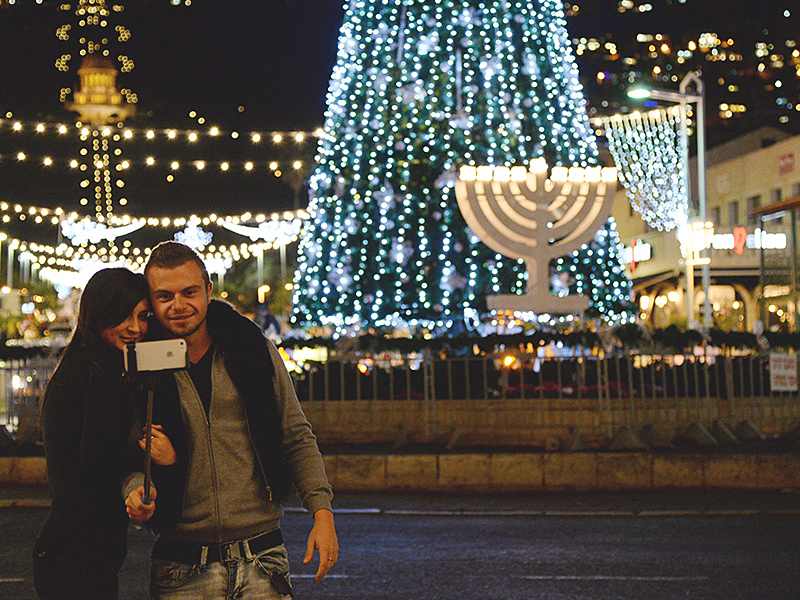We are in the darkest time of year. No wonder so many religions feature light at this season. It’s an understandable response to short, sombre days and long, long nights.
The clouds outside our windows today remind me of an old hymn, based on Psalm 104: “His chariots of wrath the deep thunderclouds form/ And dark is His path on the wings of the storm”
Even when the sun breaks through occasionally, the mountains are totally obscured by clouds sullenly promising rain. No wonder some of our friends have fled south, even moved east, where the temperature may be chilling but the sky is blue.
Outside our door, neighbours are stringing Christmas lights in the trees, brightening up the streets and tempting us – but no, no never – to add a few blue and white ones. Our little chanukiyah will look pretty timid next to that brilliance of reds, greens and whites.
READ: JEWS AND CHRISTMAS: ENJOY THE HOLIDAY
In the book Winter, based on his 2010 Massey Lectures, Adam Gopnik wrote: “What we have in modern times, after all, is a season of festivals – fall into winter, pointing toward spring, one following the next – and all involving the world’s one permanent religion: the dream cult of rejuvenation. The earth does renew itself; we don’t. And so we want to connect our human cycle of mere growth and decay where winter holds no spring, to the natural cycle of renewal. We can’t do it, of course, but we can’t stop trying.”
Winter was always a time of death, but, at the same time, a promise of rebirth. Every year, Persephone is dragged back down into the underworld, her loss giving us up here just a taste of the murkiness below, dressing us in blackest mourning. Think, too, of Milton’s Lucifer lying on the lake of black fire in “darkness visible.” Abandon hope of light in that dark kingdom. Or imagine the Egyptians’ plague of tangible darkness.
Maybe these blackouts were not winter, but how familiar they seem by Dec. 21! That’s winter up here in the true north, that’s our storm god, our intimation of mortality.
Many years ago we heard a drash on Chanukah. The speaker theorized that the custom of lighting the lights arose not in the direct wake of the Hasmonean victory, but later, in mourning for the loss of so many victims of war. Certainly dedications of the temples came in eights, so one would think our eight lights were celebratory in nature. But as well, it seems to me, that we can also see in them reflected memory of the millions of Jews who perished over the centuries, not just in war, but more often in assaults by governments, the church and erstwhile neighbours.
READ: SHINING A LIGHT ON MENORAHS
We also know that the dark days of winter, reluctant to let the sunshine in, can give rise to depression that comes from too little light. Our systems need light, they crave it. So deprivation can assault our bodies as well as our emotions.
Near our home is Granville Island, a former industrial site now housing a food market, restaurants, theatre and craft locales. Every winter, the Island (as we call it) hosts a mid-winter carnival. The event features – what else? – lots of light.
Those of you who have lived in or visited Vancouver know that the sun tends to come out from behind the clouds just before it sets. We see it reflected in windows of the high-rise condos downtown and emphasizing thick darkness over the North Shore mountains.
If it is raining over the city, we may even get an afternoon rainbow in the northeast. Then darkness, total enough for Milton’s hell.
We may imagine God as a caring shepherd. As the Scottish hymn has it, “The Lord’s my shepherd, I’ll not want, he makes me down to lie.”
But on days like today, it is the god of storm and cloud who is most immanent.
